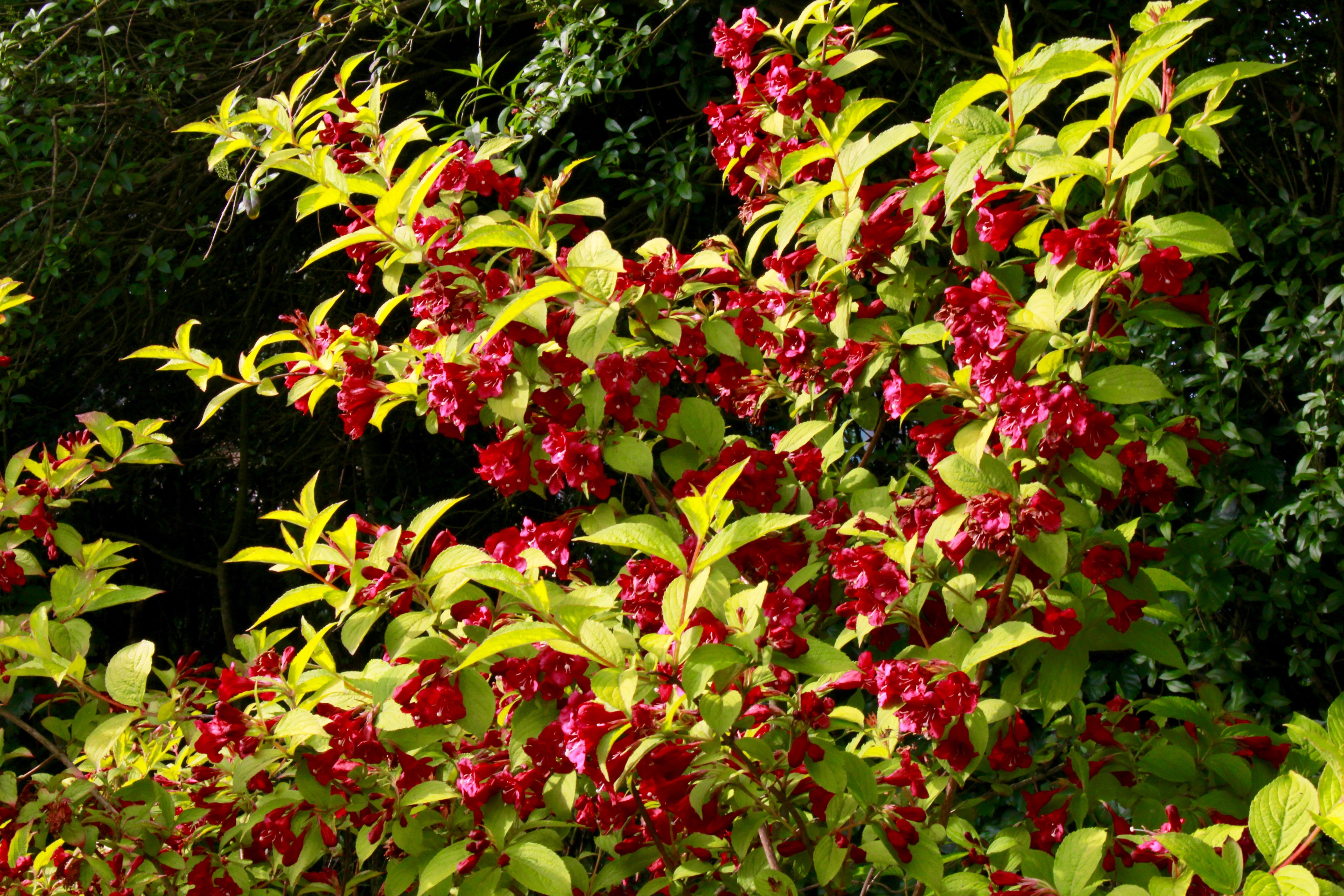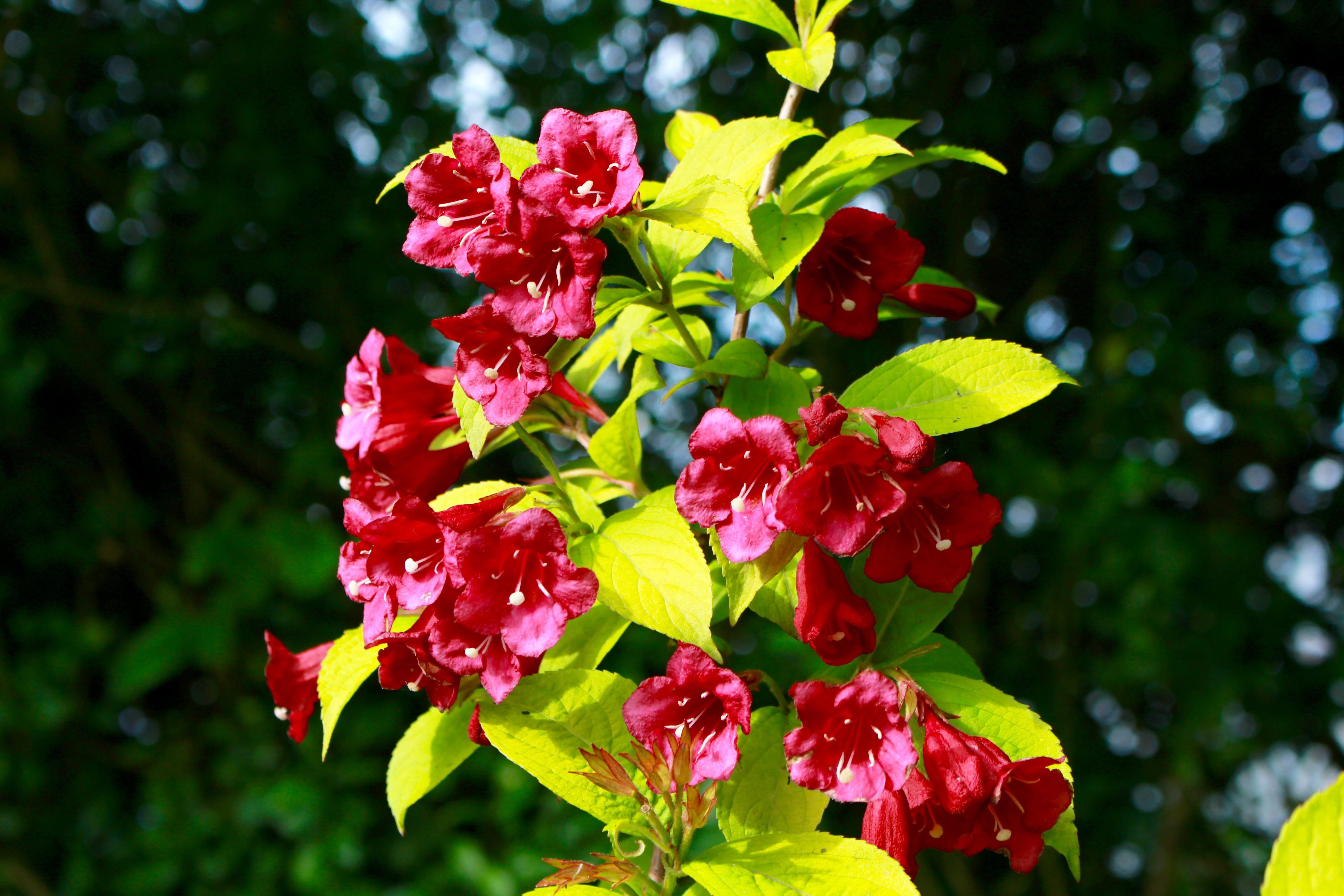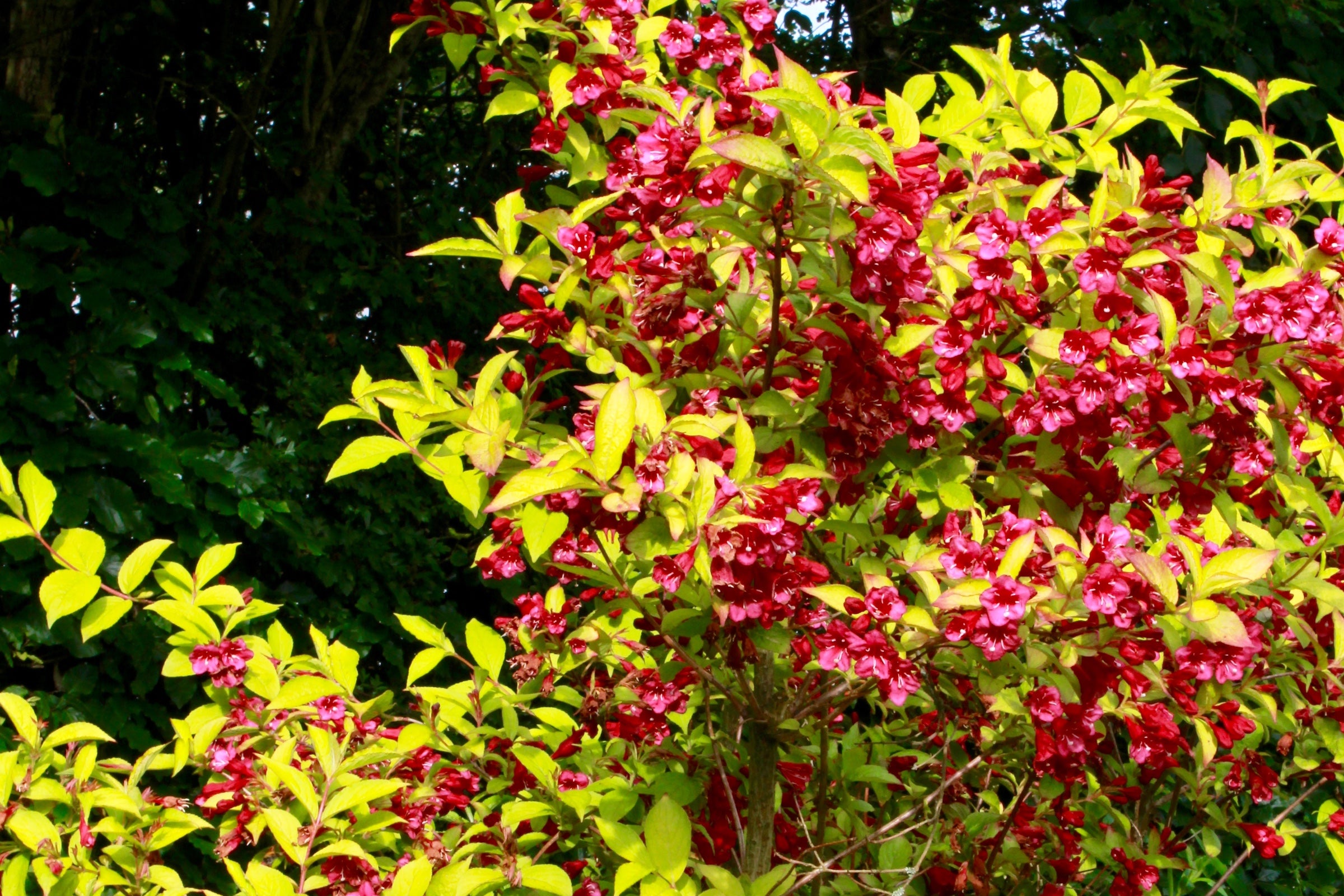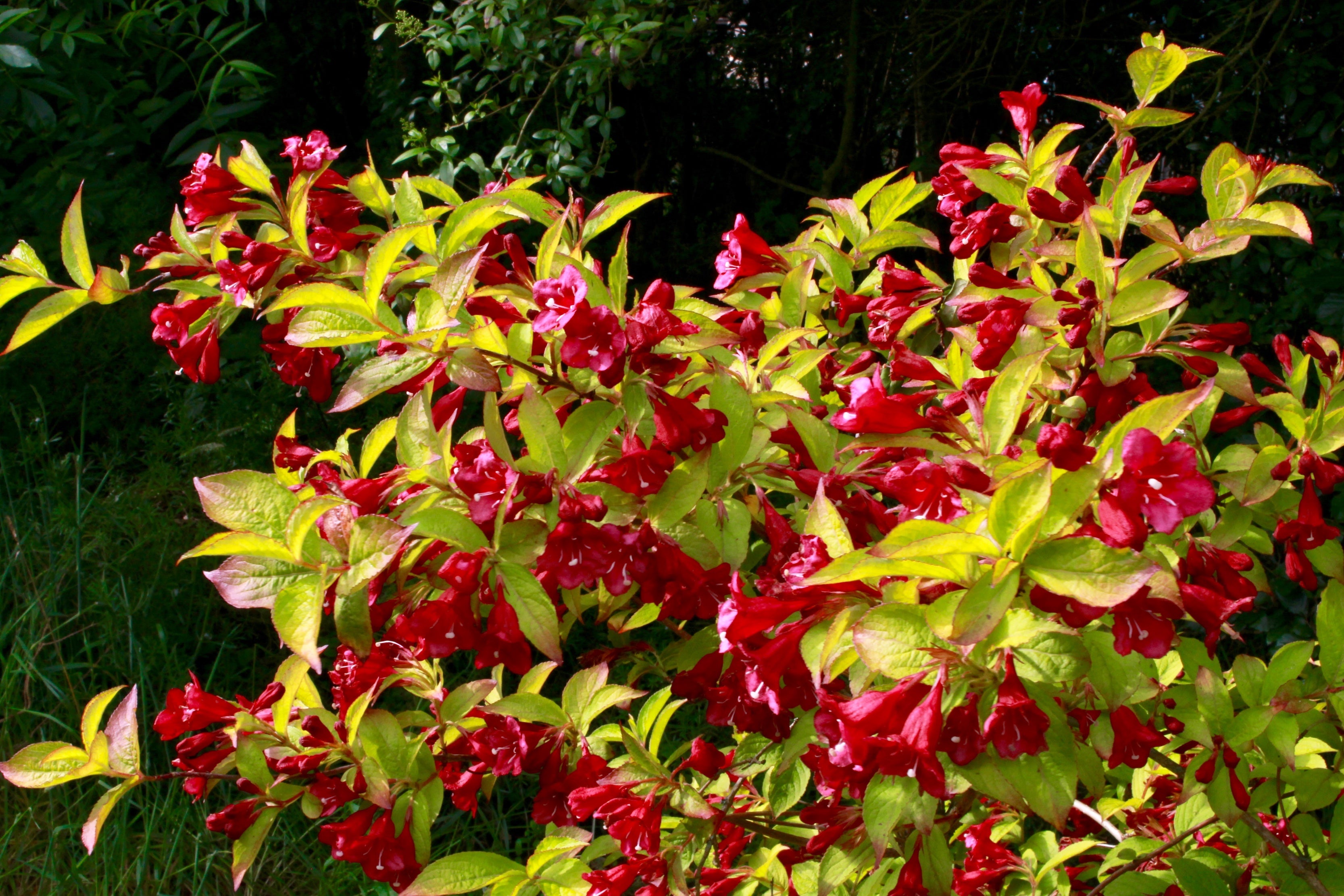Weigela Briant Rubidor = 'Olympiade' (v)
Approx. 0.5 litre pot
About this cultivar:
Weigela Briant Rubidor = 'Olympiade' (v) is an introduction from French plantsman Andre Briant. This was found as a branch sport of 'Bristol Ruby' with the same red flowers but with bright but soft yellow foliage. Bloom occurs singly or in clusters along the branches of the previous year's growth, frequently covering the entire shrub with flowers in summer with a less showy, intermittent repeat bloom sometimes occurring throughout the year. 'Olympiade' is synonymous with 'Rubidor'.
- Position: Full sun, partial shade (better in full sun)
- Soil: Almost any soil - Grows well in Ballyrobert
-
Flowers: June, July, August, September
- Other features: Bees, Butterflies, and Bugs
- Hardiness: Fully Hardy, Grows well in Ballyrobert, H7 - Hardy in the severest European continental climates (< -20°C)
- Habit: Bushy
- Foliage: Deciduous
- Height: 120 to 210 cm (4 - 7 ft) (but you can prune to shape)
- Spread: 150 to 240 cm (5 - 8 ft)(but you can prune to shape)
- Time to full growth: 5 to 10 years
- Plant type: Herbaceous Perennial, Shrub
- Colour: Red, yellow, green
- Goes well with: Lysmachia, hedge
About this genus:
Weigela is a genus of about 30 species (it changes!) of deciduous shrubs in the honeysuckle family (Caprifoliaceae). Native to eastern Asia they are named after the German scientist Christian Weigel.
Lets go for a wee detour, or should I say a ….Weigel... detour?!?! Among other things, Weigel developed a cooling heat exchanger which was later improved upon by Justus von Liebig and then became known as the Liebig condenser. Do you remember that from High School Chemistry?
Weigela leaves tend to be ovate-oblong with an acuminate tip and with a serrated margin. The flowers are usually five-lobed white, pink, or red (rarely yellow) corolla, produced in small corymbs (flat flower cluster) in early summer. The fruit is a dry capsule containing numerous small winged seeds. Size can be variable but is usually a medium type shrub.
Several fossil seeds and fruit fragments of Weigela have been found from the middle Miocene strata (15 to 10 million years ago) in Denmark. So, it has been around a long time, though perhaps not always in Asia.
Presumably first brought to European gardens by Robert Fortune, in his 1847 book ‘Three years’ wanderings in the Northern Provinces of China’ (here) he writes "Another plant, certainly one of the most beautiful shrubs of northern China, the Weigela rosea, was first discovered in the garden of a Chinese mandarin near the city of Tinghae on this island {Chusan}. This spring, it was loaded with its noble rose-coloured flowers, and was the admiration of all who saw it, both English and Chinese. I have great pleasure in saying that all these plants and many others, natives of Chusan, are now growing in our gardens in England.” We have great pleasure too Robert…
The British Weigela national collection is held at Sheffield Botanical Gardens (they also have the National Collections of Sarcococca and Diervilla).
Ok, Ok, I have been indulgent. What does that mean in the garden!?!? Well it will grow in most places that aren’t too extreme, in some our photos you can see the moss growing on the surrounding soil – this is not that well drained (honestly we only select plants like this here…..).
We like to use cultivars with colourful foliage against which other plants contrast, Lysmachia for example. They have also great flowers though, so if you want more of them put it in a sunny location. Some people even like to blend them into a hedge!








